Cyclops – First Generation Of Giants Who Were Prisoners Of Tartarus
A. Sutherland - AncientPages.com - The Cyclops are probably best known for their massive, cyclopean masonry and blacksmithing.
Who were these mythical giants?
A first century CE head of a Cyclops, part of the sculptures adorning the Roman Colosseum. Image credit; Steven Lek - CC BY-SA 4.0
This first race of Cyclops – Brontes (thunderer), Sterops (lightener), and Arges (thunderbolt) - were the first generation of Greek giants. They were monstrous children of Gaia, Mother Earth, and Uranus (Ouranos) means 'sky.'
Each of them, as well as their future descendants, such as Polyphemus, we know from the Odyssey, had only a single blazing eye located directly in the middle of the forehead. This eye is said to represent 'the fiery sun.' Each one lived alone with his family on a mountaintop. Their father, Uranus, considered them so shockingly hideous that he threw the Cyclops into Tartarus, the lower region of the Underworld.
Was it only their ugly appearance, which forced the mighty Uranus to get rid of them, or was he simply afraid of their enormous power?
In any case, Uranus believed that he would never see them again. Freed and again placed in the dungeons of Tartarus, the Cyclops had to stay imprisoned for a very long time.
Mother Gaia and her children knew they must cooperate to fight their father. It was apparent that Uranus hated his offspring and hid them in Gaea's body.
She appealed to the sons for vengeance; Cronus (a Titan) alone responded. He took a sickle and removed his cruel father Uranus' testicles as he approached Gaia. As Uranus lay dying, he cursed his son, saying:
"Cronus, it will come to pass that one of your children will do to you what you have just done to me." Then, with a final shudder, a look of anger and betrayal in his eyes, Uranus died
Cyclops: Image credit: Odilon Redon (1840–1916) - collection: Kröller-Müller Museum - Public Domain
Source: https://artsandculture.google.com/asset/the-cyclops-odilon-redon-1840-1916/mAFMK3NTXaN_RQ?hl=en
A sky and weather god, Zeus, raced to Tartarus to release the imprisoned giants. The Cyclops were free because they worked for Zeus, forging thunderbolts.
Cannibals, Craftsmen And Accomplished Builders
Although they were frightening to look at, these young gods were powerful and brilliant craftsmen and accomplished builders. However, different authors described them in their way.
As we know, most mythologies always present several alternative versions of their stories and figures. In Homer's performance, the Cyclops were lawless cannibals dealing with a pastoral life; later authors made them rude, strong, and stubborn giants, but also the craftsmen of Hephaestus and skilled builders.
The famous Cyclopean walls are supposed to be their incredible legacy. Greeks of the Classical Age believed that only the Cyclops, mythical giants, could have been skilled and strong enough to build such gigantic walls. Other structures, such as the massive fortifications of Argos, Tiryns, and Mycenae, were also attributed to the Cyclops.
Pausanius, (c. AD 110 – c. 180, who lived and worked during the reigns of Roman emperors Hadrian, Pius, and Marcus Aurelius, wrote that:
"Nothing is left of the ruins [of Tiryns] except the wall, built by Cyclops with natural rocks, all so huge that a pair of mules would not even begin to shift the smallest. In ancient times, little stones were fitted to bind the rocks together."
As accomplished blacksmiths, the Cyclops contributed remarkable magical weapons for the gods. At first, they created a formidable thunderbolt for Zeus, the most powerful god of the Olympian pantheon.
With this weapon in the form of a handgun launching a death ray, Zeus was able to win the war against the Titans.
Among the Cyclops' other achievements in weaponry were: Hade's Helmet of Darkness, which made its wearer invisible; Poseidon's Trident, which would later become the emblem for the future god of the sea; and Artemis' magical bow and arrows.
Written by – A. Sutherland AncientPages.com Staff Writer
Updated on May 25, 2023
Copyright © AncientPages.com All rights reserved. This material may not be published, broadcast, rewritten or redistributed in whole or part without the express written permission of AncientPages.com
More From Ancient Pages
-
 Probably The Oldest Star Map Discovered In Stone Chamber Of The Kitora Tomb, Asuka Nara, Japan
Ancient History Facts | Jul 19, 2015
Probably The Oldest Star Map Discovered In Stone Chamber Of The Kitora Tomb, Asuka Nara, Japan
Ancient History Facts | Jul 19, 2015 -
 Why Did Vikings Burn And Bury Their Longhouses?
Ancient Traditions And Customs | May 3, 2017
Why Did Vikings Burn And Bury Their Longhouses?
Ancient Traditions And Customs | May 3, 2017 -
 Why Did First Printed Books Scare Ancient Scholars In Europe?
Ancient History Facts | Sep 18, 2021
Why Did First Printed Books Scare Ancient Scholars In Europe?
Ancient History Facts | Sep 18, 2021 -
 Unique Sword Casts New Light On Viking Voyages Across The North Sea
Archaeology | Jul 18, 2022
Unique Sword Casts New Light On Viking Voyages Across The North Sea
Archaeology | Jul 18, 2022 -
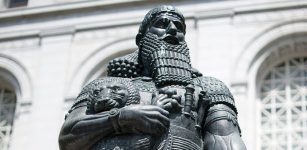 Ashurbanipal – Last Great Ruler Of Assyria And His Famous Well-Organized Library
Featured Stories | Jun 21, 2021
Ashurbanipal – Last Great Ruler Of Assyria And His Famous Well-Organized Library
Featured Stories | Jun 21, 2021 -
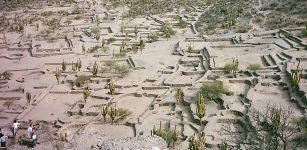 Ancient Ruins Of Quilmes: Largest Pre-Colombian Settlement In Argentina
Featured Stories | Mar 28, 2019
Ancient Ruins Of Quilmes: Largest Pre-Colombian Settlement In Argentina
Featured Stories | Mar 28, 2019 -
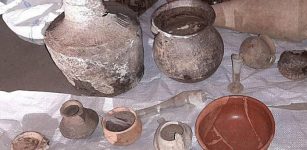 Europol Reports: ‘Millions’ In Stolen Treasures After Busting Crime Gang In Bulgaria – Recovered
Archaeology | Jul 4, 2020
Europol Reports: ‘Millions’ In Stolen Treasures After Busting Crime Gang In Bulgaria – Recovered
Archaeology | Jul 4, 2020 -
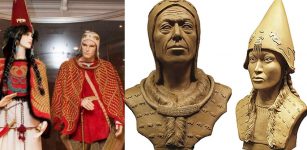 Stunning Facial Reconstruction Of ‘Siberian Tutankhamun’ And His ‘Queen’ Who Died 2,600 Years Ago
Archaeology | Jan 12, 2021
Stunning Facial Reconstruction Of ‘Siberian Tutankhamun’ And His ‘Queen’ Who Died 2,600 Years Ago
Archaeology | Jan 12, 2021 -
 25,000 Ancient Egyptian Statues, Ushabti Figurines And Artifacts From New Kingdom Cemetery Revealed For The First Time
Archaeology | Oct 26, 2023
25,000 Ancient Egyptian Statues, Ushabti Figurines And Artifacts From New Kingdom Cemetery Revealed For The First Time
Archaeology | Oct 26, 2023 -
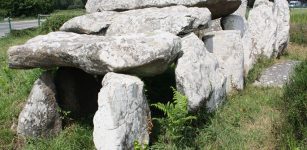 Mysterious Megalithic Stones Of Carnac, France – An Unsolved Neolithic Enigma
Civilizations | Oct 12, 2018
Mysterious Megalithic Stones Of Carnac, France – An Unsolved Neolithic Enigma
Civilizations | Oct 12, 2018 -
 Significance Of Secret And Powerful Number 108 That Has Accompanied Humankind For Thousands Of Years
Ancient Symbols | Jun 19, 2017
Significance Of Secret And Powerful Number 108 That Has Accompanied Humankind For Thousands Of Years
Ancient Symbols | Jun 19, 2017 -
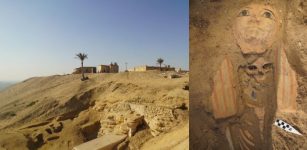 Ancient Egyptian Tombs With Stunning Trove Of Artifacts And Human Remains Unearthed In Saqqara
Archaeology | Jan 17, 2024
Ancient Egyptian Tombs With Stunning Trove Of Artifacts And Human Remains Unearthed In Saqqara
Archaeology | Jan 17, 2024 -
 On This Day In History: The Lumière Brothers Presented Their First Film In Paris – On Dec 28, 1895
News | Dec 28, 2016
On This Day In History: The Lumière Brothers Presented Their First Film In Paris – On Dec 28, 1895
News | Dec 28, 2016 -
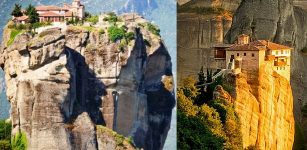 Meteora – A Sanctuary Of Harmony And Quietness “Hanging” In The Sky
Civilizations | Aug 14, 2015
Meteora – A Sanctuary Of Harmony And Quietness “Hanging” In The Sky
Civilizations | Aug 14, 2015 -
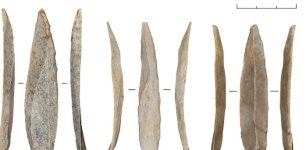 Mass Production Of Stone Bladelets Led To A Cultural Shift In Paleolithic Levant
Archaeology | Jan 7, 2023
Mass Production Of Stone Bladelets Led To A Cultural Shift In Paleolithic Levant
Archaeology | Jan 7, 2023 -
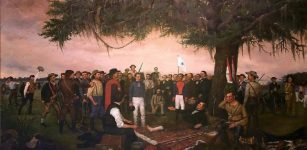 Texas Revolution – A Courageous Fight For Independence
Featured Stories | May 30, 2019
Texas Revolution – A Courageous Fight For Independence
Featured Stories | May 30, 2019 -
 Secret Coded Boontling Language Of Northern California
Ancient History Facts | Apr 8, 2019
Secret Coded Boontling Language Of Northern California
Ancient History Facts | Apr 8, 2019 -
 On This Day In History: William Penn – English Philosopher, Quaker And Founder Of Pennsylvania Was Born – Oct 14, 1644
News | Oct 14, 2016
On This Day In History: William Penn – English Philosopher, Quaker And Founder Of Pennsylvania Was Born – Oct 14, 1644
News | Oct 14, 2016 -
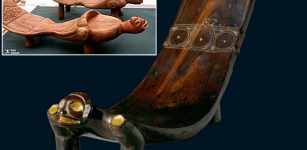 Curious Ritual Wooden ‘Duho’ Stool Of Ancient Taino People
Ancient Traditions And Customs | Sep 12, 2017
Curious Ritual Wooden ‘Duho’ Stool Of Ancient Taino People
Ancient Traditions And Customs | Sep 12, 2017 -
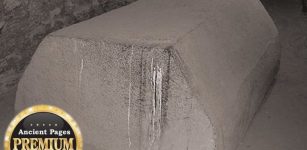 Mystery Of Ancient Sarcophagi In Egypt
Featured Stories | Aug 26, 2015
Mystery Of Ancient Sarcophagi In Egypt
Featured Stories | Aug 26, 2015


